

To get the best experience for our site, we recommend you upgrade to the latest version of Internet Explorer, or select another web browser, a list of the most popular web browsers can be found below
You can download the main browser here:
 Position :
Home>
News & Tutorial
>Products
Position :
Home>
News & Tutorial
>Products
Date: 2018-01-19 15:08:42
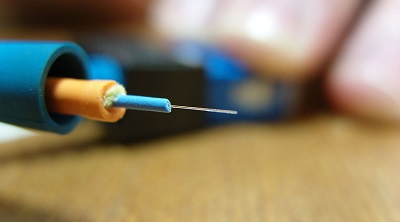
Why?
Because multimode fiber was inexpensive, easy to manufacture, install and terminate, also 850 nm LEDs were easily accessible. Multimode fiber made Local Area Networks (LAN) possible.
Then in 1980, single mode fiber optic was created and it became the ideal fiber for long transmission distances. Developing single mode fiber was considerable cheaper than multimode, but the former needed expensive transmitters (lasers) to operate.
Therefore, choosing which fiber optic to use was really easy: multimode for LANs and single mode for long transmission applications.
But improvements in transmitters have made it possible to achieve higher speeds and longer transmission distances with multimode fiber. And now the question is: which multimode fiber to use?
Multimode Fiber Types
OM1: It has the bigger core diameter (62.5/125μm) and was widely used in the 90s in the U.S, becoming the standard multimode fiber in the country. OM1 fiber has a max attenuation of 3.5Db/km working at 850nm and 1.5dB/km at 1300nm. Nowadays is widely used in indoor applications for 100 Megabit Ethernet. OM1 cables are orange jacketed.
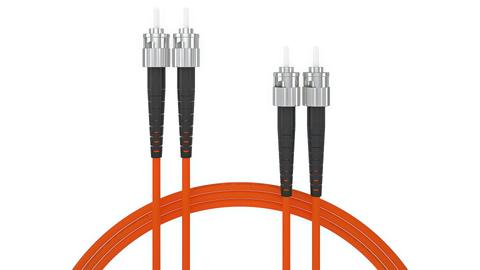
OM2: Is a 50/125μm fiber standardized to support 10 Gigabit Ethernet applications at 82 meters, but typically used for 1 Gigabit Ethernet applications in Short-Haul Networks, Local Area Networks (LANs) & Private Networks.
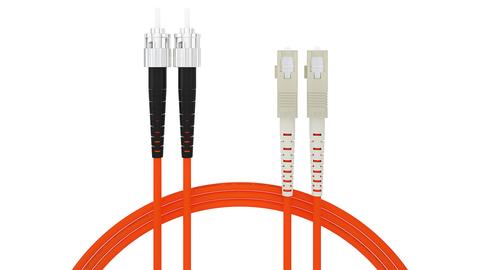
OM1 and OM2 fiber cables are both orange jacket and the only way to differentiate them is to carefully read the cable marks.
OM3: Is 50/125μm optimized fiber, which means it works with laser based equipment that uses fewer modes of light. OM3 fiber runs 10G Ethernet applications at 300 meters, and has been improved run 40G and 100G Ethernet applications for 100 meters with MPO connectors.
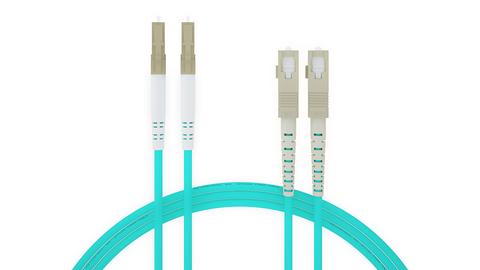
OM4: Is the highest level of multimode fiber. It also has a 50μm core but is enhanced to run 10G Ethernet up to 550 and 40G and 100G up to 150 meters with MPO connectors. Is commonly used High-Speed Networks: Data Centers, Financial Centers & Corporate Campuses.
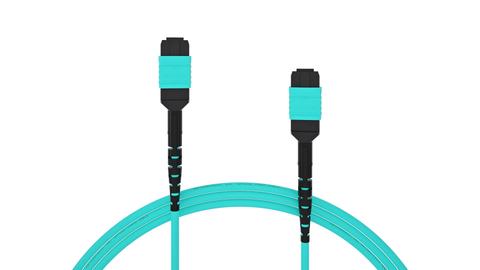
Both OM3 and OM4 fiber are blue jacketed, so the only way to differentiate them was to read the marks in the cable jacket, until Erika Violet color was standardized for OM4 cables in order to help technicians to recognize them easily.
50μm Fiber VS 62.5μm Fiber
50μm and 62.5μm refers to the span of the fiber core, the part of the fiber through which light travels. These dimensions are typically specified as 50/125μm and 62.5/125μm, which includes the size of the cladding, the part of the fiber that keeps the light inside the core due to the low index of refraction.

The main difference between 50μm and 62.5μm cables is in bandwidth. The 50μm provides a higher 850nm bandwidth, which makes it the ideal fiber for inter and intra-building connections. 50μm OM2 fiber is specified for 500Mhz/km at 850nm for 500 meters, while OM3 laser optimized fiber is standardized for 2000 MHz∙km and OM4 for 4700 MHz∙km, in contrast with 160 MHz∙km of 62.5μm.


Nevertheless, one thing you have to be very carefully about is not to mismatch 62.5 μm with 50 μm. This is a really common mistake to make when working with OM1 and OM2 fibers because, as pointed out before, they both have orange jackets. Besides, both claddings are 125 μm, which makes them even harder to be differentiated.
As stated by Jim Hayes, trainer and president of the Fiber Optic Association, in his article The Problem with Mismatched Fibers if you are transmitting from a smaller fiber to a larger one, there will be loss but it will be minimal since the larger fiber will gather all the light from the smaller fiber.
The real problem comes when the transmission is being done from a larger fiber to a smaller one, because the light from the larger fiber will overfill the smaller one and there will be huge loss.
How much loss are we talking about? According to Hayes, connecting or terminating a 62.5μm into 50μm fiber can cause from 2 to 4dB loss depending on the type of light source, which can cause the system do work improperly or have high error rates.
Which Multimode Fiber Should You Choose?
50μm fiber superior technical characteristics are clear, which is why it is the first choice for high speed network installations. OM3 and OM4 fiber cables improve network design flexibility, providing 10G, 40G and 100G data rates at the lower costs.
62.5μm fiber is only used to support legacy networks and equipment. So what to do if you have 62.5μm in your plant? The recommendation is to install 62.5μm fiber in the links that require it and install OM3 and OM4 fiber in new network links, this way you will start future proofing your network.
 Position :
Home
>Products
Position :
Home
>Products
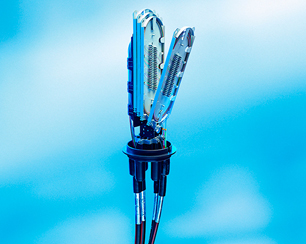
Dome and in-line type fiber optic splice closures have their...
Learn More
Here in Sun Telecom we have a vast array of fiber optic to...
Learn More ics@suntelecom.cn
ics@suntelecom.cn  +86 18964888554
+86 18964888554
 Building No.145, Lane 666 Xianing Road, Jinshan Industrial Zone, Shanghai 201506, China
Building No.145, Lane 666 Xianing Road, Jinshan Industrial Zone, Shanghai 201506, China
Copyright ©1989-2025 ALL Rights Reserved
ICP (Shanghai) Number: 13005159